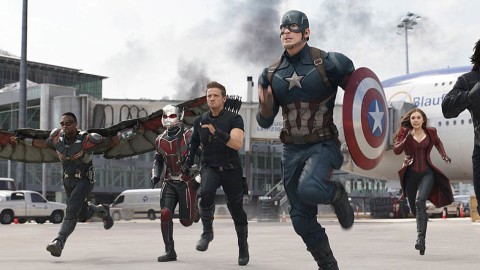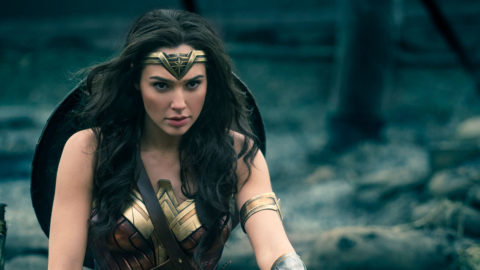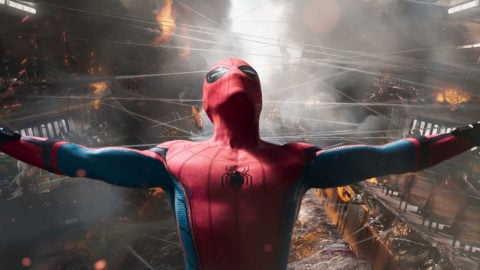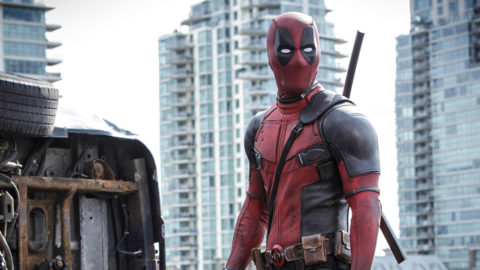Deep Focus: Dark Phoenix
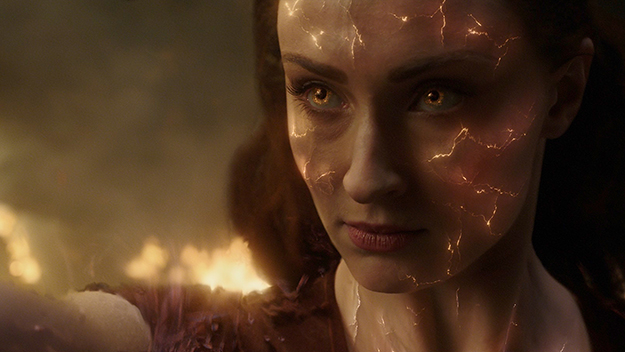
Images from Dark Phoenix (Simon Kinberg, 2019)
Young Adult fiction elements pop up in X-Men films as regularly as zits. At some point in every X-Men movie, Dark Phoenix included, Professor Charles Xavier, headmaster at his School for Gifted Children, urges both students and mutants at large to embrace their differences from ordinary humans. He wants them to come out, come out, whatever they are. He persuades them to master psychological confusions that arrive with their erupting physical transformations. They carry parallels to the LGBTQ community, oppressed racial and ethnic minorities, and the underclass, but they’re also just adolescents. Xavier releases their inhibitions and teaches them to control their powers and emotions. He tries to instill in them the most positive and forward-looking of human feelings: hope.
From the series’ get-go, its first and most frequent director, Bryan Singer, emphasized potent themes: intolerance and alienation. He pitted Xavier’s mutant liberalism—his struggle to find “a better way” for mere humans to integrate and work together with others like him—against the Mutant Power politics of the arrogant and revenge-hungry Magneto. Situating our youthful heroes in pitched battles of ideals put the focus on the X-Men’s level of maturity. In Singer’s peak film, X-Men: Days of Future Past (2014), he leavens the Weltschmerz with satirical ’70s kitsch and some first-rate setpieces, including a phenomenal showcase for Peter Maximoff/Quicksilver (Evan Peters), who moves so fast that other characters look frozen. He whooshes around a room, preparing his opponents for takedowns that are also clever burlesques of action-movie gags. In a measure of how well Singer sustains that film’s wry gravity, Quicksilver registers as the ultra-juvenile class clown.
Dark Phoenix, the final X-Men film to feature Jennifer Lawrence as shape-shifter Raven/Mystique, tries to turn Sophie Turner (Game of Thrones), who plays the grown Jean Grey, into a replacement alpha-female. Jean is telekinetic, telepathic, and ultimately the most powerful X-Man of them all: potentially the Captain Marvel in this side-branch of the Marvel movie empire. In this critical role, Turner puts on a great game face and displays more spontaneity and feeling than Brie Larson does as Captain Marvel. Sadly, first-time writer-director Simon Kinberg focuses so intently on her twentysomething anxieties that he traps her in a flimsy mask of tragedy. As our world hovers on the brink of destruction, she’s all about finding out who lied to her, who truly loves her, and whether she’ll ever get to know herself, including the person she turns into when she blacks out and wreaks havoc. It’s as if the writer-director is using a superhero movie to rediscover the roots of soap opera. His emphasis on everything Young about the franchise swamps everything that’s Adult.
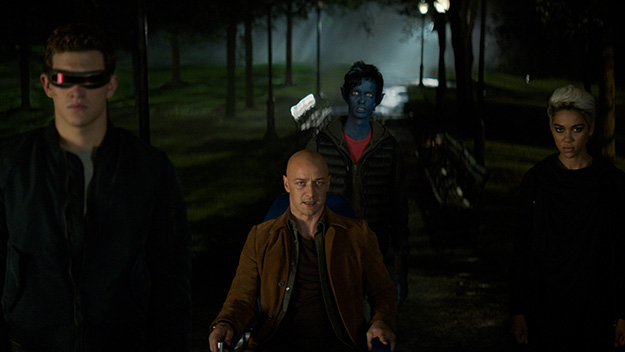
The movie could be called The Fault Really Does Lie in Our Stars. In 1992, Mystique leads the X-Men into space to rescue a shuttle crew about to be dissolved by “a solar flare.” The flare is actually a tremendous cosmic life force—the source of Creation itself—and it has attracted Jean to serve as its bodily host. Jean has always found it hard to regulate her outsize abilities and now, rising from those odd energy flames in outer space, she terrifies herself in a way she hasn’t since she was 8, when her involuntary impulses orphaned her (or so she thinks). She levels trees and injures friends with her unconscious cataclysms, and in one fatal case, it’s ambiguous whether she acts consciously. She tells her lover Scott Summers/Cyclops (Tye Sheridan) that she can’t trust herself with him. It’s as if she’s in an existential plastic bubble. Her quandary unlocks tensions between Xavier (James McAvoy) and Mystique. (This time, Lawrence plays the shape-shifter with a seasoned, stubborn authority.) Mystique believes that Xavier acted like a paternalistic egotist with a savior complex when he brought Jean into the fold. She earns a good laugh after she observes that women like herself and Jean invariably save the men in these stories. She asks Xavier why the group shouldn’t be called X-Women.
Before long, the lamentable effects of Jean’s flare-ups set mutant against mutant, especially when she kills one of the last two surviving members of the X-Men’s first class. Hank McCoy/Beast (Nicholas Hoult) enlists Magneto (Michael Fassbender), ever the yang to Xavier’s yin, to help him murder Jean/Phoenix. Xavier and Ororo Munroe/Storm (Alexandra Shipp), Scott Summers/Cyclops, and Quicksilver try to save her. Jessica Chastain shows up as an alien in pale human form who craves the all-mighty life force lodged inside of Phoenix’s body. This glacial, menacing platinum blonde, who considers the mutants to be as inferior as Magneto regards humans, needs these mysterious creative vapors to revive her own advanced yet desperate species.
Singer’s last X-Men film fell victim to digital bloat and rampaging pretension, right on down from the title: X-Men: Apocalypse. Kinberg, who wrote and co-produced Apocalypse and Days of Future Past, and boasts multiple writing and production credits in the franchise, takes an opposite tack to the same degree of pretension. He strips away extravagance, whimsy, or panache and homes in on torment and heartbreak. He starts with Turner’s plaintive voice articulating a cosmic identity crisis: “Who are we? Are we simply what others want us to be? Are we destined to a fate beyond our control? Or can we evolve, become something more?” Then he proceeds to flesh out Jean’s childhood car crash with tone-deaf hyper-realism. He stages the accident so literally that we don’t think anyone could recover from the trauma—I doubted I could shake it and get lost in the rest of the movie.
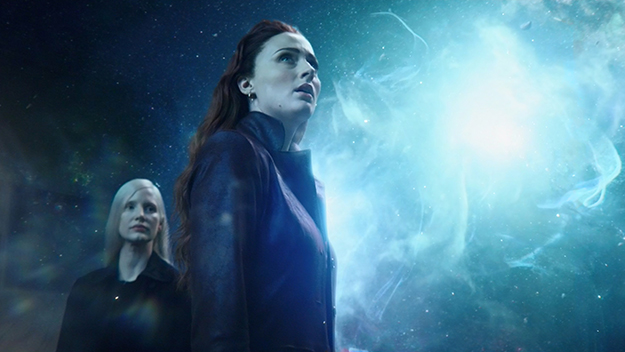
Summer Fontana gives the film’s best performance as grade-school Jean. (Next best is the super-professional yet always empathic Lawrence.) Preternatural gravity and an intuitive sort of reticence emanate from Fontana’s round, freckled face under bright red hair. She matches up well with Turner, whose dramatic features are a perfect fit for Phoenix Agonistes. Turner doesn’t get to be as dignified. Her face is always tensing or crumpling with an anguish accentuated by gold-colored CGI fault lines. Turner has said she studied schizophrenia to understand what it was like for the Phoenix Force to invade Jean’s heart and mind. But it plays out less like a split-personality syndrome and more like a transformational infection. As for her nemesis, Vuk (rhymes with yuck), it’s more fun to think of the hyper-focused Chastain playing a would-be genocidal extra-terrestrial than it is to watch her. Despite carefully placed dabs of sadistic drollery, we never feel that in her gut she enjoys being a bad girl. McAvoy seems to have a better time playing Xavier as a closet megalomaniac.
Kinberg lacks the directorial chops to provide a stinging context for fly-by supporting characters, chaotic setpieces, and sketchy locations. I had to wonder why the Beast finds Magneto living in a rural island commune. Then I remembered he’s an Auschwitz survivor and this funky enclave could be his Diaspora version of a kibbutz.
In the fictional equivalent of burying the lead, Kinberg actually hides the topical hook. We eventually learn that Xavier erected mental scaffolding inside 8-year-old Jean’s psyche to wall off memories of her mother’s death and an equally devastating family secret. He didn’t consider the risk that Jean might respond with ultra-violence if she ever learned the truth. Xavier may be the psychological equivalent of the Chinese medical researcher who disabled a gene to immunize twin girls against HIV—only to have researchers discover that people without the gene come down easily with flu and have higher mortality rates.
Xavier’s debatable ethics and hubris take a back seat as Kinberg frames the film with Jean’s two acts of self-sacrifice. First she makes herself vulnerable to the Phoenix Force so she can save the X-Men and the astronauts. Then, near the end, Jean’s intense fellow feeling triumphs over her despotic Phoenix side. Knowing the Force will consume her, she fights to keep it from Vuk anyway. She uses it to take down Vuk and the other alien invaders and preserve her sorely-tested friends and newly appreciative frenemies. She achieves self-control via self-immolation. She becomes a nearly divine figure, visible in a sparkly spray across the sky.
The sequence that ends with her taking a hit for the team begins with her strapped to a horizontal cross on a military train. William Dean Howells famously said that what the American public wants is a “tragedy with a happy ending.” Phoenix could be what the American public wants from a secular messiah. She dies for our sins and kills for them, too.
Michael Sragow is a contributing editor to Film Comment and writes its Deep Focus column. He is a member of the National Society of Film Critics and the Los Angeles Film Critics Association.



